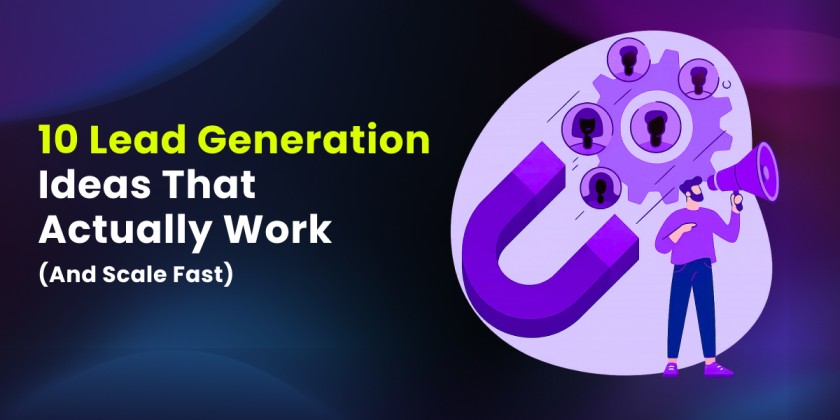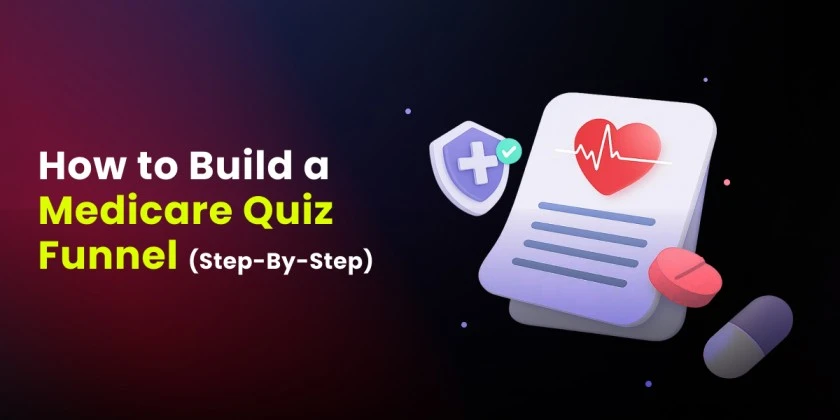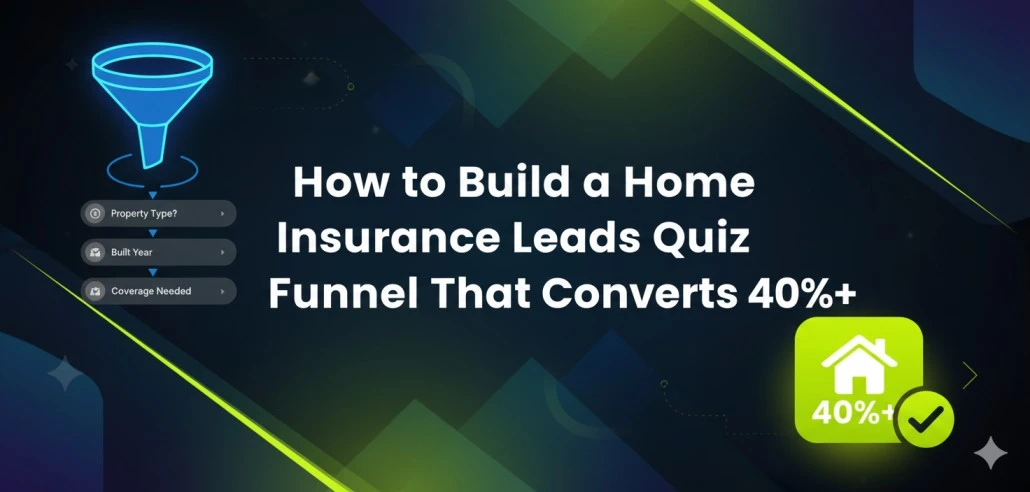You probably noticed lead generation funnels in your daily life without realizing what it is. Have you ever walked into a store because an attractive sign or display caught your attention? That’s a lead generation funnel doing its job.
Think of lead generation as fishing. You first decide which types of customers you’re looking for. Then you determine where to find them. Next, you select the right bait to attract their interest. Then you cast your line. The process continues after someone shows interest.
You need effective methods to guide them toward becoming a customer without losing them along the way. The most successful lead generation funnel works quietly in the background. It smoothly guides potential customers toward a business’s products or services without being obvious about it.
Key Takeaways:
- Lead generation funnels are the key to engaging with your audience and attracting potential customers.
- With a small percentage of leads moving along the funnel, it is crucial to understand how to connect with leads at each stage.
- There are 5 steps to creating a lead generation funnel that converts:
- Map the customer journey
- Create valuable content
- Drive traffic to lead magnets
- Capture lead information
- Define marketing-to-sales handoff
What is a Lead Generation Funnel?
A lead generation funnel shows how someone moves from first finding your brand to becoming your customer. It’s called a funnel because fewer people move to each next step. In the end, only a small number of your initial leads will actually buy something.
Each customer takes their own path, so lead funnels aren’t strict rules. They simply help your team figure out which activities work best for each potential customer based on their specific needs.
Why a Funnel?
You might ask why marketers use the funnel shape instead of other shapes. The reason is both simple and important: a funnel perfectly shows how potential customers move through your marketing and sales process.
Think about pouring water into a funnel. A lot of water goes in at the wide top, but only some of it comes out through the narrow bottom.
Similarly, many potential customers discover your brand, but only a percentage convert into paying customers. At each stage, some prospects drop off while others continue their journey deeper into the funnel.
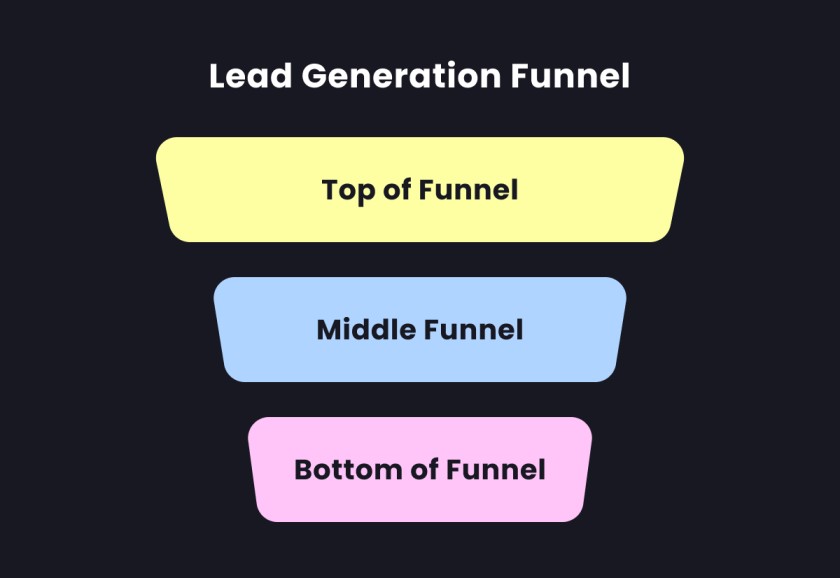
The funnel is divided into three main sections:
- Top of the Funnel (TOFU): The widest part where awareness begins. Here, you cast a wide net to attract as many relevant prospects as possible.
- Middle of the Funnel (MOFU): The narrower section where interest develops into consideration. Prospects here need more specific information about how your solution addresses their problems.
- Bottom of the Funnel (BOFU): The narrowest section where decisions are made and conversions happen. These prospects are ready to buy and need that final push.
This framework gives marketing teams a clear way to organize their work based on where buyers are in their journey. Think of it as a visual reminder that you constantly need fresh faces at the wide top to ensure a steady trickle of buyers at the narrow end.
Lead Generation Funnels vs. Sales Funnels
Don’t confuse lead generation with sales pipelines; they’re cousins, not twins. Here’s the difference:
Lead generation funnels transform complete strangers into curious prospects and eventually into paying customers. The magic happens when you connect with people who’ve never heard of you before.
Meanwhile, sales funnels pick up where lead generation leaves off. They focus on nurturing folks who already know your name and have shown some interest.
Lead gen starts from absolute zero, hunting for potential customers in the wild. It handles everything that happens before your sales team enters the picture: creating valuable resources, placing strategic ads, and gradually building trust with newcomers.
Where sales teams track active deals already in motion, lead generation covers the entire journey from first hello to final handshake. This includes all those early touchpoints blog posts that solve problems, targeted ads that catch attention, and relationship-building emails that warm up cold prospects before your sales team makes their first call.
Marketing vs. Sales in the Lead Funnel
We also need to separate the marketing and sales parts of the funnel. The marketing lead generation funnel covers the early steps and sits above the sales funnel.
A marketing qualified lead enters the top of the sales funnel and becomes a sales qualified lead. The sales lead funnel represents the later parts of the overall lead funnel.
Marketing teams usually handle generating leads using methods like creating content, sending email campaigns, and running social media ads to fill the top of the funnel.
This creates marketing leads that need to be checked to make sure they match your ideal customer profile. If they’re quality funnel leads, they move to the next step, which is the top of the sales funnel.
The Five Stages of a Lead Generation Funnel
To create an effective lead generation funnel, you need to understand the path your prospects take from first hearing about you to finally making a purchase.
While there are three main sections in a funnel, there are actually five stages that buyers go through.

Let’s look at each stage of the funnel and see how you can improve your approach at each point.
1. Awareness Stage (TOFU)
Most people at this stage don’t even know what problem they have yet. They’re just looking around, trying to figure out what feels “missing” in their lives. This is when customers first learn about your brand.

Goal: Get a potential buyer’s attention with a lead magnet (a valuable free item or service that collects contact information).
At this stage:
- New leads might search Google for other solutions
- They discuss issues with friends, colleagues, or on social media
- They’re looking for education, not sales pitches
For example:
Max (sample small business owner) might be wondering, “How can I email hundreds of people at once?” or “How do I know how well my emails are performing?” He’s not necessarily looking to buy something, yet he’s just trying to learn.
For MailPro (sample email marketing software company), answering these questions is a perfect way to find its target audience and drive traffic to its landing pages. At this stage, Max finds blog articles detailing how mass emailing is manually possible but tedious, suggesting email marketing tools as an alternative.
2. Interest Stage (TOFU/MOFU)
Once prospects are aware of their problem and have realized that they have more questions, they begin actively searching for more information. This is where you take advantage of their attention by providing more value and expertise.
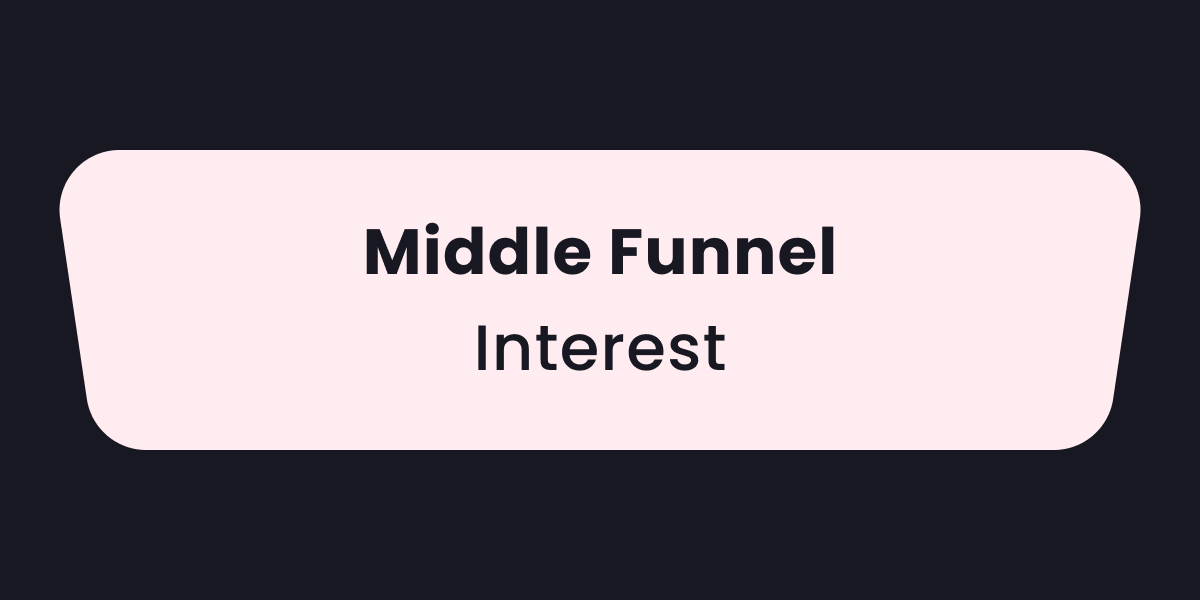
Goal: Show your company’s value and build interest in your brand.
At this stage:
- Leads compare different approaches to solving their problem
- They consume more in-depth content or download resources
- They start narrowing down their options
Let’s continue with our initial example:
In his search for answers, Max found MailPro, an email automation software that helps small business owners connect with their audience.
He consumed more helpful advice on their blog and watched videos about MailPro’s features, learning that his challenges are best solved by implementing an email marketing solution.
3. Desire/Consideration Stage (MOFU)
Now, your audience understands that there are solutions to their more complex problems and considers your product or service as a viable solution. This is often the longest phase of the funnel.

Goal: Focus the lead’s interest on a specific product or service that solves their problem.
During this stage:
- Leads evaluate specific product features and benefits
- They request demos or start free trials
- They compare pricing and ROI
- They seek proof through testimonials and success stories
This is how that works in our sample:
As part of MailPro’s lead generation process, they gathered testimonials from successful businesses that used their software.
Max learns more about email marketing software, explores how MailPro can help grow his business, and finds customer reviews that align with what he wants to achieve. He also looked at other companies that offer similar features and compared pricing between them.
Your marketing now transitions from purely educational to somewhat promotional, making the case for choosing your solution over others.
4. Action/Confirmation Stage (BOFU)
After lengthy consideration, leads are now ready to buy but need one final reassurance. This is where you nudge them in the right direction and help them choose your solution.

Goal: Convince the prospect to make a purchasing decision.
At this stage:
- Sales leads may negotiate terms or explore special offers
- They may request consultations with sales teams
- They seek final validation from stakeholders
- They look for risk-reducing guarantees
Here’s the Action stage in our sample:
Eventually, Max received offers from different software companies for a free trial, including MailPro. He signed up and experimented with each platform.
MailPro’s marketing efforts included hosting live webinars to share information about their premium features. They also assigned Max a dedicated account manager to help him launch his first campaign, which he greatly appreciated as a new potential customer.
As can be seen here, you should focus on removing barriers to purchase and providing compelling reasons to act now rather than later.
5. Conversion Stage (BOFU)
In the conversion stage, prospects are ready and have the means to make a purchase. They’ve decided your product is the best fit for their needs.
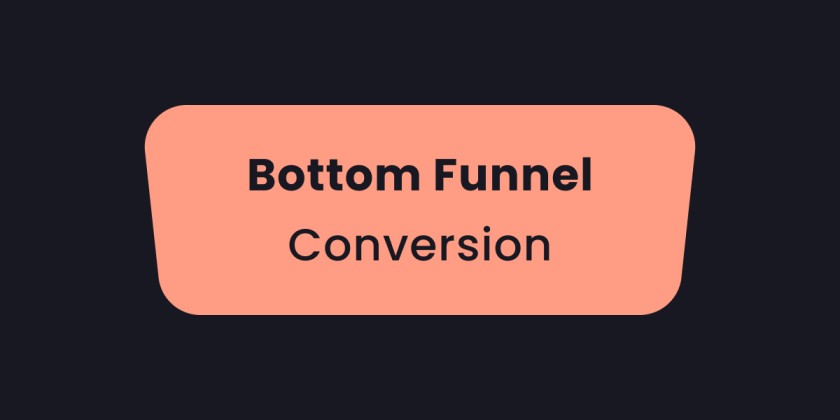
Goal: Close the deal by making the sale!
Your job is to make the buying process seamless by:
- Offering personalized customer service
- Meeting your customers where they are
- Helping them overcome any final objections
Following our sample:
The software proved helpful in meeting Max’s email marketing needs, and he was satisfied with his overall experience. He decided to upgrade from a free trial to a monthly subscription, but MailPro took this as an opportunity to upsell him further by offering an annual plan with two months free.
Max hit the “Upgrade Plan” button, and MailPro’s sales and marketing efforts succeeded.
In our example, the business owner decides to finally click the call-to-action (CTA) button “Automate My Email Campaign,” enters their details and payment information, and begins setting up their account. They should now shift to ensuring a positive first experience that leads to long-term customer relationships.
Max’s story shows how a small business owner moves from having questions about email marketing problems to becoming a paying customer of an email automation platform. Various contact points guide him through making his decision.
It’s worth noting that customer journeys can be very different across industries, business sizes, and target audiences.
These journeys are complex and have many parts, especially when customers interact with your business through multiple channels. Your approach must change based on what each user needs.
Customers don’t always follow a straight line from beginning to end. They might jump in and out at different stages of the funnel. Some might spend more time researching, while others might be ready to buy right away.
Your funnel needs to be flexible enough to support these different paths.
Your task is to ensure they have a smooth user experience regardless of where they join and be able to guide them to your offers.
5-Step Guide to Building Lead Generation Funnels that Convert
Ready to turn those leads into customers? Let’s dive into building a funnel that works. Creating your lead generation system isn’t just helpful, it’s crucial for business growth.
And remember, this isn’t an overnight process. You’ll need some patience, but starting now puts you ahead of the game.
I’ve seen businesses transform their conversion rates with this 5-step approach:
Step 1. Map the Customer Journey
First things first, you need to know exactly how your potential customers move from “I might have a problem” to “I’m ready to buy.” This means:
- Rolling up your sleeves and talking directly to customers about their struggles
- Digging into your website data to see how visitors actually behave
- Sketching out detailed profiles of who your ideal buyers really are
- a. Set Goals and Objectives
Before mapping anything, ask yourself: What’s the real purpose of this map? Who exactly are you trying to reach? Once you nail this down, you can pick the right metrics to track your progress, no more guessing if your strategy is working.
- c. Build Buyer Personas
Time to put your detective hat on. Look at your past customer data and market research to build accurate buyer personas. These aren’t just generic descriptions, they’re detailed snapshots that capture:
- Basic facts like age, income, and location
- The specific challenges keeping them up at night
- What they’re actually looking for in a solution
With these profiles in hand, you can craft a journey map that speaks directly to what your potential customers truly need, not what you think they want.
- b. Gather Customer Insights and Identify Touchpoints
The third crucial step is identifying customer touchpoints. Customer touchpoints refer to any interaction in which customers engage with your business.
Do not underestimate the value of quick surveys and interactive polls. These customer insights are collected to gain a deeper understanding of the actual customer experience, rather than making assumptions.
Find the actual lead generation channels and interactions customers have with your brand by asking how they found you and how they prefer to engage with you.
These can include digital ads, social media, website visits, customer service interactions, in-person conversations, or email communications. Each touchpoint presents an opportunity to make a positive impression and move them along.
Identify key activities at each stage of the lead funnel. For example, during the “consideration” stage, customers might:
- Watch product videos
- Read reviews
- Sign up for your email lists
Moreover, decision factors are key touchpoints that reveal the motivations behind a lead conversion and triggers that move customers through the journey.
This research forms the foundation for creating an accurate customer journey map by providing evidence-based insights about customer behavior, preferences, and experiences.
Lastly, tracking analytics show how customers navigate through your websites and landing pages. Take advantage of these insights to build your customer journey map.
Here’s the customer journey map for our example (Max and MailPro):

Step 2. Create Valuable Content
Once you understand your customer’s journey, the next step is creating content that addresses their needs at each stage. These are often referred to as lead magnets, content pieces you use to attract leads into sharing their contact information so you can nurture your relationship with them.
In creating lead magnet funnels, develop a comprehensive content strategy that addresses the specific needs at each stage of the funnel. Delivering value at each touchpoint increases the likelihood of conversion:
- Top-of-funnel content should educate and build awareness through blog posts, infographics, and videos that answer common industry questions.
- Middle-of-funnel content deepens engagement with whitepapers, webinars, comparison guides, and case studies that demonstrate your expertise.
- Bottom-of-funnel content should focus on conversion with product demos, free trials, pricing comparisons, and implementation guides.
For instance, a home repair service company might create blog posts about “5 Home Repairs You Should Know How to Do” for TOFU, provide a “Yearly Home Maintenance Checklist” for MOFU, and offer a specific free home repair quotation or a coupon code for BOFU.
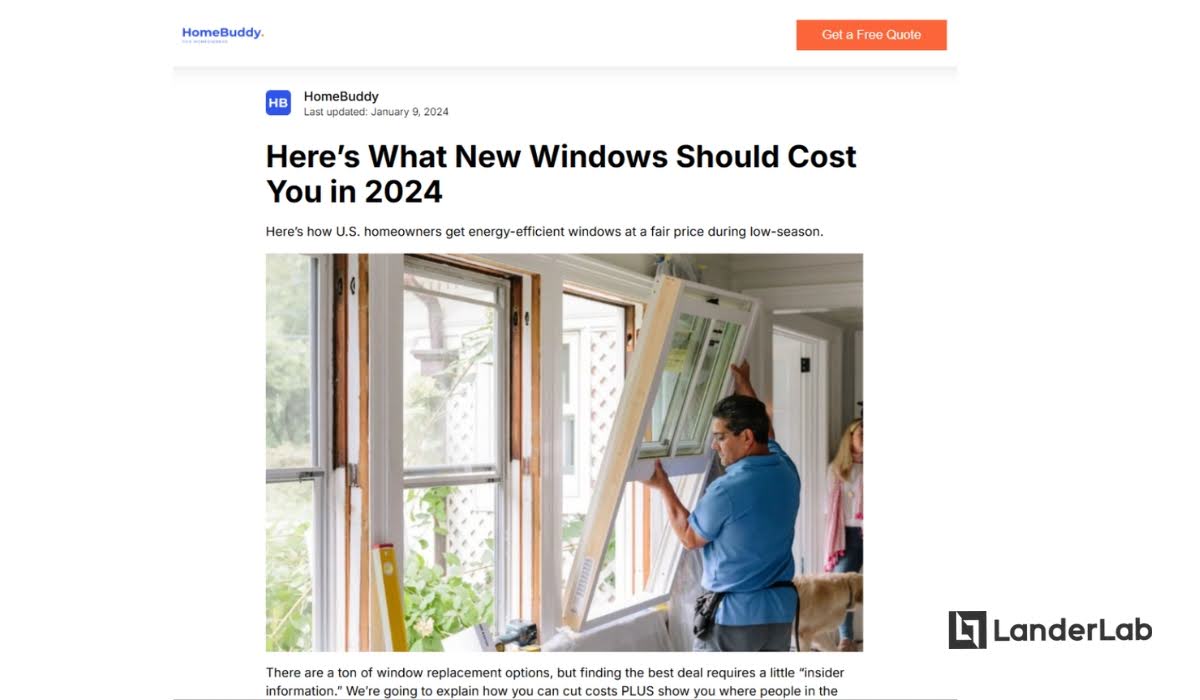
Moreover, as consumers become more aware of marketing strategies, creating content for lead generation funnels needs to be more helpful than just being salesy. Here’s how you can approach each stage:
- Awareness: Don’t rush to sell in the initial stages. Look for questions your audience may have. Answer them and focus on providing value.
- Interest: Create comprehensive guides, detailed how-tos, and interactive materials.
- Desire/Consideration: Go in-depth into the functionality of your product and how it addresses complex problems for your audience.
- Action/Confirmation: Highlight unique features and key benefits that differentiate your solution, and direct their interest toward a particular offer tailored to their specific problem.
- Conversion: Include detailed terms and conditions and privacy policies in your lead funnels. Upsell pages are also helpful at this stage. Highlight money-back guarantees.
Remember that bringing valuable content doesn’t end when you reach the end of the lead generation funnel!
Guide your customers towards a great experience. Offer them a step-by-step guide on your thank-you pages and in your confirmation emails as they get started. Follow up on their progress and support them in being successful with your product and services.
Lastly, getting feedback is a massive advantage in optimizing your lead generation funnels. Your sales efforts should include refining your lead generation funnels to provide tailored content to your new leads and potential customers.
Step 3. Drive Traffic to Lead Magnets
With your content ready, it’s time to get it in front of potential customers. There are several ways to drive traffic to your lead magnets.
Digital marketing tends to focus on numbers. We refer to the flow of viewers to your site as “traffic” or “sessions,” and measure potential leads that turn into customers as “conversions.”
But here’s something you should never forget: there are real people behind this traffic.
They aren’t just analytics that bring you data. There’s true user intent behind every click to your CTAs, so always consider that in your sales and marketing efforts. Your qualified leads are individuals who are genuinely interested in your products and services.
Let’s break down how potential customers can find your lead magnets:
Paid Advertising
Paid traffic lets you quickly reach high-quality leads through targeted advertising. The main advantage is immediate visibility to your audience, as you can always set your target demographics, localize ads, and set marketing budgets.
You can use search engine ads to appear at the top of search results when people look for solutions you provide. Display and banner ads enable you to reach your target audience on relevant websites within your industry.
Video ads on platforms like YouTube and sponsored social media posts on Instagram or Facebook capture attention with visual storytelling. Furthermore, retargeting campaigns allow you to re-engage individuals who have already shown interest by interacting with your brand.

Search Engine Optimization
Organic traffic builds sustainable, long-term growth without constant ad spend. Driving traffic through search engine optimization is a common strategy to increase website visitors and conversions on lead funnel landing pages.
As your target audience searches for content related to their needs, SEO increases your chances of appearing in their results. Update your website regularly with fresh content and ensure that your content is optimized for your users’ search intent.
Establish authority in your niche by consistently producing high-quality content, including blog posts, guides, and case studies. Evergreen content that remains valuable over time is also an effective way to increase page authority.
This approach takes longer, but lead generation funnels also benefit from an optimized website. While slower than paid methods, organic traffic tends to be more sustainable and cost-effective in the long term.
Email Marketing and Automations
Email remains one of the most effective channels for nurturing leads and driving traffic to your lead magnets. Emails can be personalized and focus on one call to action to increase engagement rates at scale.
You can benefit from using an email marketing software to create automated sequences triggered by specific actions. This helps you in lead qualification and creating segments. Utilize this segmentation to deliver targeted messages to different lead funnels.
Abandoned cart emails help recover sales leads that you may have lost during their customer journey. In doing email marketing for lead generation funnels, it’s best to test subject lines, content, and timing to optimize performance.
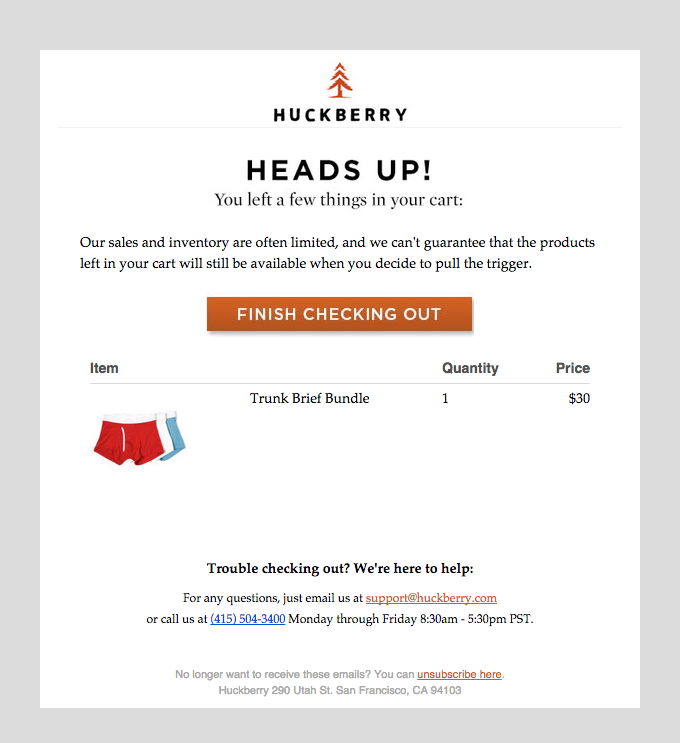
Social Media Strategies
Social platforms offer diverse ways to connect with prospects. Build communities through groups where you share expertise and engage members. Regular posting establishes your brand presence. Collaborate with influencers to expand your social media reach.
Each platform has unique strengths – LinkedIn for B2B networking, Facebook for community building, and Instagram for visual content. Focus on platforms where your audience spends time. Combine organic content with paid social advertising for the best results.

Omnichannel Marketing
This integrates all your marketing channels to generate high-quality leads. Ensure consistent messaging across channels while tailoring content to each platform’s strengths. Analyze available data to understand how leads move between channels and deliver valuable content accordingly.
The goal is to meet customers where they are in their customer journey and provide a cohesive brand experience throughout, just as MailPro did when they connected with Max through multiple channels, from blog content to webinars to personal account management.
Step 4. Capture Lead Information
In a lead generation process, capturing leads is, of course, the key to everything. Lead generation tools streamline this process.
For example, landing page builders like LanderLab provide drag-and-drop interfaces to create forms without coding. You can customize fields, layouts, and designs to match your brand.
Landing page builders also feature built-in compliance with GDPR (General Data Protection Regulation), data encryption, and spam protection to ensure that lead data is collected securely. Take security seriously when capturing sensitive lead information.
Lead capture forms enable you to collect a wide range of information from prospects. Moreover, you can create multi-step pages that break up long forms to qualify leads.
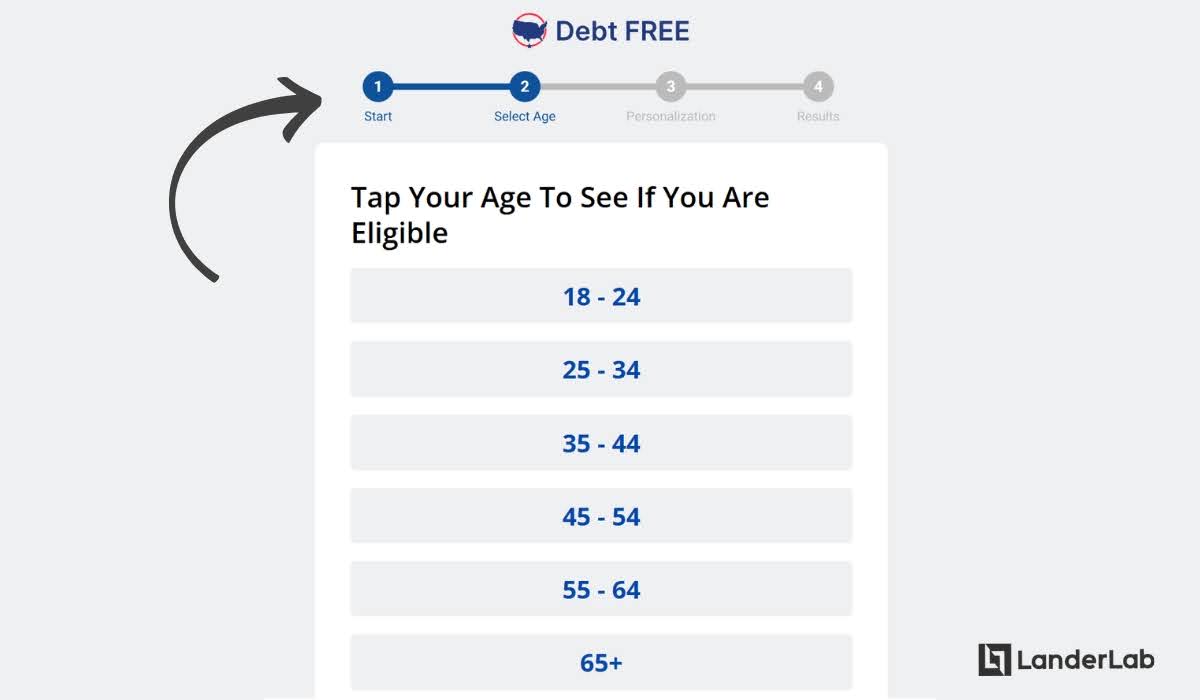
LanderLab also enables the creation of exit-intent popups, sticky bars, and slide-ins, which are non-intrusive ways to capture potential leads.
Note: Landing pages can be used for both inbound lead generation and outbound lead generation strategies. You can ensure you have winning landing pages when you create unique ones based on the strategy and traffic source.
A good tool can handle lead management effectively. It can connect directly with CRM (Customer Relationship Management) systems, email marketing platforms, and automation software, ensuring captured data flows seamlessly into your lead funnel.
Aside from the usual lead capture, it’s also crucial to be able to create variants of landing pages for A/B testing. Collect analytics to track conversions and drop-off points for continued optimization of your lead funnel strategy.
Step 5. Define Marketing-to-Sales Handoff
The final step in building an effective lead generation funnel is establishing transparent processes for transitioning leads from marketing to sales.
Define specific criteria to gather more qualified leads for the sales funnel. Implement lead scoring systems that automatically identify potential customers ready for a pitch.
Valuable leads are best handled with care, so the transition of leads from marketing to sales must be seamless and efficient, as we saw with Max when MailPro assigned him a dedicated account manager once he showed serious interest.
Regularly analyze conversion rates at each funnel stage and test different content formats and messaging. The lead funnel strategy should be adjusted based on actual sales outcomes and must be shared between marketing and sales teams.
Taking Your Lead Generation Funnel to the Next Level
Now that you understand the framework for building a lead generation funnel, it’s time to implement and optimize. Start small if you need to create one high-quality lead magnet for each funnel stage, set up a landing page to capture information, and begin driving traffic through one or two channels.
As you gather data and see what works, expand your efforts. Pay special attention to the points where leads drop off in your funnel; these are your biggest opportunities for improvement.
Is your TOFU content not attracting the right audience? Is your form too long and causing abandonment? Are your emails not compelling enough to drive clicks?
Remember that building a lead generation funnel isn’t a “set it and forget it” process. The most successful businesses continuously refine their approach, test new content, and adapt to changing customer behaviors. Schedule regular reviews of your funnel performance and be willing to make adjustments.
By focusing on genuinely solving problems and building relationships rather than just “converting leads,” you’ll create a funnel that not only generates sales but builds a loyal customer base that advocates for your brand.
Your lead generation funnel is ready. Now it’s time to turn those prospects into loyal customers who can’t wait to tell others about your solution to their problems.
Turn More Leads Into Customers
Now that you understand how lead generation works, start creating high-performance landing pages with LanderLab and convert your traffic into real revenue.

